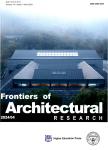Framework for capacity based sustainable design ■ development: towards resilient communities
作者机构:Deportment of ArchitectureFaculty of Architecture and the Built EnvironmentDelft University of TechnologyDelftthe Netherlands
出 版 物:《Frontiers of Architectural Research》 (建筑学研究前沿(英文版))
年 卷 期:2019年第8卷第4期
页 面:498-512页
核心收录:
学科分类:08[工学] 0812[工学-计算机科学与技术(可授工学、理学学位)]
基 金:Avans University of Applied Sciences
主 题:Capacities Resource capacities Social sustainability Resilient communities Self-reliance
摘 要:The most fundam ental struggle for realizing a sustainable built environm ent still lies in the use of non-renew able resources in its *** efforts have been taken to increase the use of sustainable materials the vast majority of the building sector still relies heavily on depletable *** article debates that the most fundam ental contributors to sustainable developm ent are the evaluation and incorporation of inhabitant *** the available natural materials,inhabitant skills and tools could play a fundam ental role in creating sustainable ***,inhabitant capacity-models insufficiently cover all instrum ental capacities into one model(both inhabitant and community).Therefore,this article describes:a framework for evaluating inhabitant capacities;how to map available resource capacities;how these capacities can be incorporated into sustainable housing development and *** framework was developed as a part of a support tool,which helps designers and engineers to evaluate inhabitant *** describe the fram ework and support tool a rural Sub-Saharan community is used,as their capacities are relatively less com plicated com pared to a‘western’*** article concludes that the framework shows great potential in reducing the use of unsustainable *** ore,that it could enable social sustainability by creating self-reliant and resilient communities.



